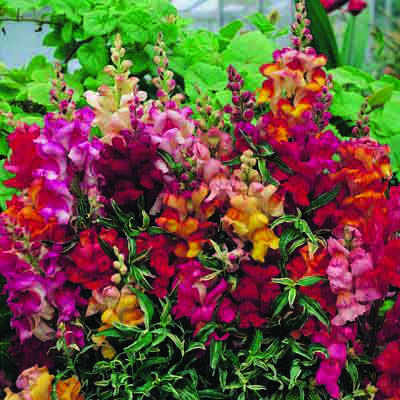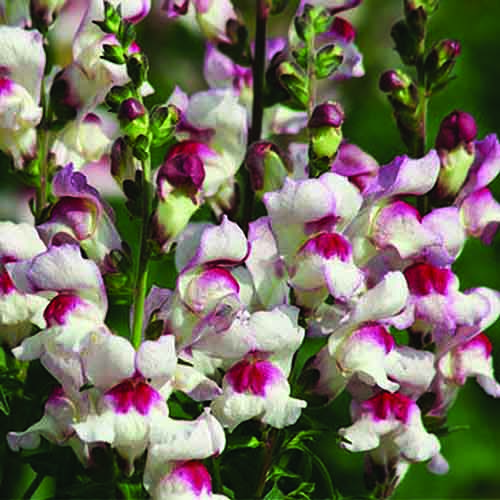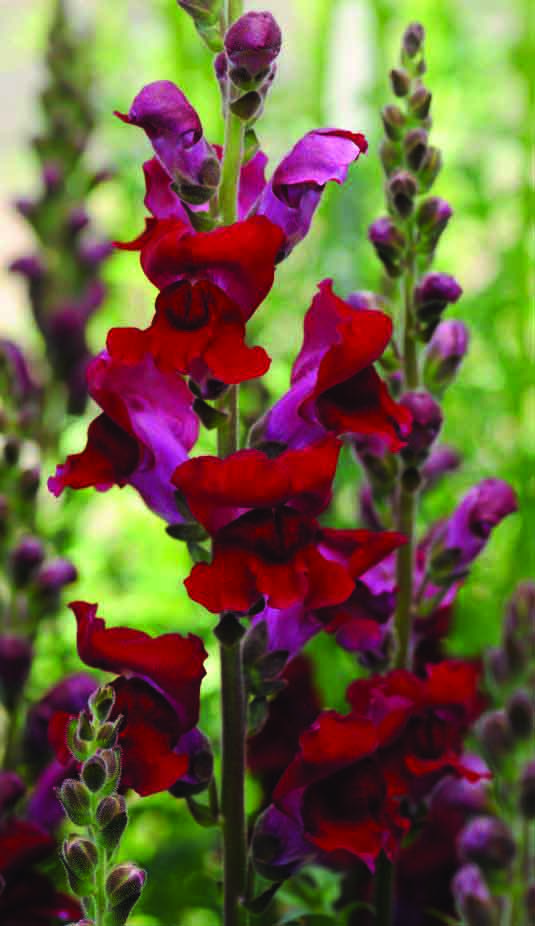Every once in a while, you meet someone who can change your life in a most profound and positive way. That’s what happened to me as a child when my grandmother Sykes, mum-mum, lived within bicycle distance of our home. By now you know she was an avid gardener with numerous varieties of annuals, perennials, and roses growing in her garden borders…a cottage garden. With only elementary schooling, she had unbelievable knowledge of plants and their names, and where to put the right plant in the right place to perfection. Her passion for gardening I was fortunate enough to inherit!
One of her favorite annuals was the old-fashioned cottage garden flower, snapdragons that have been around for many generations. As a child, I knew all about snapdragons…commonly called ¨dragon¨ flowers. They look like a dragon’s face with a cute and slightly mean-looking mouth that opens and closes when you pinch the flower´s throat. They are also called ¨rabbit lips¨ in Asia and ¨lion´s lips¨ in Holland. When the flower withers and dies, they can look like dried up little skulls. They are a fun flower to show your children and/or grandchildren.
The botanical name of the snapdragon is ¨Antirrhinum majus¨ pronounced ¨an-tih-RYE-num MAY-jus¨. The diversity of this flower is incredible coming in almost every color including bicolor but not in blue. These single and double flower plants have a range of heights from dwarf, medium, tall including trailing and even variegated foliage allowing them to fit into almost any spring garden…the tall ¨Rocket Red¨ is my favorite. They are related to the foxglove and look similar to them but easier to grow in our climate. They are nontoxic to animals and humans; and the deer stay clear! Because of their bright flowers and sweet scent, pollinators such as bumblebees, butterflies, and hummingbirds find them attractive but too difficult for honeybees to access the flower. They are one of the first flowering plants you can set out in spring along with your pansies and violas. They can handle frost but if a late freeze is expected I gently lay sheer curtains on top of the plants.
Although snapdragons grew in ancient gardens, the actual origin of the flower is uncertain, but some believe it was the Mediterranean basin, Spain and Italy. People have loved them since before the days of the Roman Empire. They became part of human mythology with a complex symbolism: one of grace, benevolence, strength, and protection and the other of indifference, deception, and denial. In folklore snapdragons were thought to offer protection from witchcraft. And since the time of the ancient Greeks, their colors were thought to contain magical properties: purple – spirituality; red – passion and love; yellow – happiness; white – innocence and good magic.
Growing snapdragons are pretty much a ¨snap¨ if you understand they are a cool season flower and don’t like our hot summers. Grow them in well drained, neutral pH soil in a sunny location…best with a little afternoon sun protection. They are not heavy feeders, so if you add compost to the soil when planting that might be all the food they need. Water at ground level with NO overhead watering for they are vulnerable to a number of fungal diseases. Be sure to deadhead spent flowers for continual blooming. If the plant is not growing many more buds, it is sometimes beneficial to cut back the plants and add a dose of fertilizer to kick off another growth spurt. Their peak season is April to June and August to October, so cut them back to about 5 inches after early summer blooming to entice fall blooms.
I never would have thought that year after year these old-fashioned flowers called snapdragons would evoke so many fond memories of my grandmother and her cottage garden. Her passion not only blooms in my garden but in my heart, too…I love you, mum-mum!■




